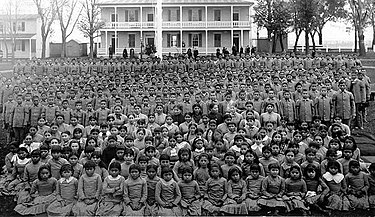Fiction Posing as Truth – A critical review of Ann Rinadi’s My Hearth is on the Ground: The Diary of Nannie Little Rose, a Sioux Girl
The genre, historical fiction, has been enjoying a resurgence. Besides books, there have been an interest in
movies (Victoria and Abdul, The Darkest Hour, Good-By Christopher Robin) as
well. A historical fiction unit is
taught to my fifth graders every year.
The beginning of the unit focuses on the traits of historical
fiction. Students are responsible for
reading a novel and sharing them with peers during literature circles. What separates this genre from fiction is
that stories take place in the past and usually include significant historical
events. Reading historical novels makes
it easy to combine both language arts and social studies. This is important since many districts and
schools are finding it difficult to find time to teach social studies in test
prep environments. More alarming are
academic communities that do not find it necessary to teach social studies
anymore.
As I teach this unit, we often research and discuss the historical
significance in the book. When reading
quality literature, it never occurs to me that these books are historically inaccurate. However, many authors are excusing themselves
from writing the truth as a way of exercising their “poetic or artistic license.”
Readers have a right to know how much of these stories are fabricated,
especially the historical aspects. Ann
Rinadi has abused the privilege of using her “license” to falsify the events
that took place during the 1880s at Carlisle School, an Indian boarding school
that deculturalized American Indian children.
Because of Indian resistance, it was less expensive to board children and
dispel their Indian ways rather than continuing to fight with adults. The headmaster of the school, Richard Henry
Pratt, famously said, “Kill the Indian in him, and save the man.
According to the author, Debbie Reese, these young children
were taken or even kidnapped from families.
The school was to “break spirits, to destroy traditional extended
families and culture, to obliterate memories and languages, and especially to
make the children deny their Indianness, inside and out.” Many of these children died at school or from
running away, and the abuse has been well documented.
Ann Rinadi has written many historical fiction children’s
books. My Heart Is on the Ground: TheDiary of Nannie Little Rose, a Sioux Girl was written by Rinadi for the
popular “Dear America” series and was published by Scholastic, a reputable
children’s literature firm. This book,
according to Barb Landis, an American Indian research specialist, was an “outrageous
depiction of a tragic period in Native American history.” Most disturbing was how Rinadi found the
characters names. When she visited the Carlisle
School, she used the names “that jumped out” at her at the Indian gravesite
located on school property. She states,
“I am sure that in whatever Happy Hunting Ground they now reside, they will
forgive this artistic license, and even smile upon it.” Rinadi’s lack of respect for these dead
children is an abomination towards the American Indian race.
Additionally, this story is filled with historical errors
and displays American Indian stereotypes through language and images found
throughout the book. Moreover, Nannie
Little Rose is able to assimilate into the white man’s culture in a period of
ten months, highly unlikely based on the true experiences of American Indian
Children.
Rinadi does a great disservice to this indigenous group of people
that were cruelly taken from their land and stripped of their culture. Children who read this book will have a false
sense of what these schools were like and how the children were treated. The Diary of Nannie Little Rose is an
example of a story told through the lens of white American culture. Rinadi and other authors have a
responsibility for creating historical fictions stories that follow the rules
of the genre, especially in children’s literature. A license is usually a privilege that one
works towards to receive. An “artistic
license” should be allowed to those who are respectful to the process. Research and interviewing those that are
experts in the field is necessary. Mistreating this benefit is unforgivable. American history must encompass all stories
from various races and cultures. It promotes
compassion, humility and the faith to not repeat aberrant periods of our past.


Comments
Post a Comment